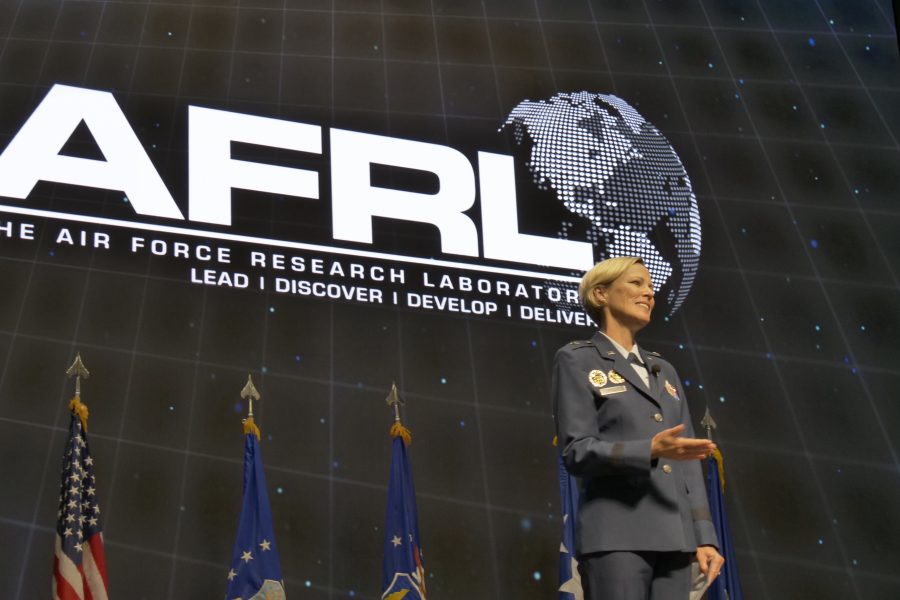More than a year after the Air Force released its “Science and Technology 2030” strategy, the officer in charge of carrying it out says the future should come a little faster.
“The strategy is important, but accelerating it, … that’s at the top of my list,” Air Force Research Laboratory Commander Brig. Gen. Heather L. Pringle told reporters Aug. 4. “I don’t want to wait. I don’t want to go slowly.”
Speeding up S&T 2030 is one of Pringle’s top priorities as she nears the two-month mark in her new job. She is the lab’s first permanent leader since Maj. Gen. William T. Cooley was abruptly fired in January amid an Air Force Office of Special Investigations inquiry into misconduct allegations. AFOSI has not responded to questions about the status of the investigation.
The April 2019 strategy tries to make the lab more ambitious and hone in on the most game-changing ideas. It aims to bridge the gaps between the various stages of research and development to accelerate projects, and recruit prospective workers from new areas of academia and industry.
AFRL is figuring out which 20 percent of its work is the most promising, so it can focus money on those programs and set up an easy transition from the lab to the field, Pringle said. That includes the three “vanguard” programs that pull resources from across the lab to mature faster; several early-stage, three-year initiatives under the new Seedlings for Disruptive Capabilities Program; and an annual Warfighter and Technologist Summit that starts this month to find the next top-priority ventures.
“We have to grow to that [20 percent],” Pringle said. “There was a ramp that was being considered and then I accelerated it by two years to achieve the 20 percent.”
The bulk of that funding will go toward the best candidates in the advanced technology development and applied research phases, on the earlier end of the development timeline.
Pringle pointed to employing digital twins—virtual versions of hardware that lets developers experiment with updates and design—alongside autonomy algorithms and drones as a potentially transformational project.
“We’ll also be looking to develop metrics to measure our progress across the S&T 2030 priorities, and then ensure that we have the appropriate stakeholders,” Pringle said. The least useful projects will be cut in the shuffle.
She must lead AFRL as it hands off some people and programs, such as new satellite and sensor designs, to the Space Force. More than 700 of the lab’s 12,700 military, civilian, and contractors will become Space Force employees but still work at AFRL, Air Force Magazine recently reported.
“We need to prove that we are one lab supporting two services,” she said. “We want to be able to … use their language, understand their challenges, and be able to leverage that to solve multidomain problems.”
As the armed forces overlap in areas from hypersonic weapons to autonomy, Pringle said she’ll be collaborative, not territorial.
“The Army has helicopters, the Navy has aircraft, both those services have forces that are going to the Space Force,” she said. “It’s going to be a multi-domain, multi-disciplinary solution, so it’s important that we break down barriers, not only at the leadership level, but across S&T.”
Army, Air Force, and Navy research lab bosses meet every few months, including an upcoming meeting on Aug. 12 to discuss metrics for measuring success in research programs.
Pringle will look for new ways to bolster the workforce, particularly amid the coronavirus pandemic.
“What I would love to achieve is to have the best culture in the science, technology, and innovation ecosystem,” she said. “We have the talent to get there, and I believe that with strong partnerships and a good focus that we can that we can get there.”
